Image Credit: Alex Wilson
Image Credit: Alex Wilson This quad-pane awning window has two suspended Heat Mirror films.
Image Credit: Alex Wilson This bladder contains krypton and is connected to the inter-glazing space in the window. It allows for pressure equalization during shipping; the connecting tube will be crimped and cut.
Image Credit: Alex Wilson
Having written about windows and emerging window technologies for longer than I care to admit (since before low-e coatings even existed), I must say that it’s incredibly fun to be building a house and having an opportunity to try out some of the leading-edge stuff I’ve been writing about.
In my effort to create a “demonstration home,” we are actually installing two very different types of windows in the 1812 farmhouse rebuild that’s underway. On the north and west facades we’re installing state-of-the-art, fiberglass-framed casement and awning windows from Alpen High Performance Products. These windows, which we ordered from Pinnacle Window Solutions in Maine, are the subject of this blog.
On the south and east facades (which you see from the road) we’re doing something very different that I’ll describe in a future blog.
Fiberglass frames are durable
Traditionally, residential windows have been wood-framed. I love the look of wood, and if properly maintained, wood windows can last a long time: the twelve-over-twelve windows in the late-1700s house we currently live in are still hanging on after more than 200 years. But there are drawbacks to wood, including decay and the need for regular maintenance.
Besides wood, the primary materials used for window frames today are vinyl (a misleading abbreviation for polyvinyl chloride or PVC), aluminum, steel, and fiberglass. Due to the very high conductivity, aluminum and steel are less common today in residential windows. Due to its low cost, vinyl has increased dramatically in popularity, finally surpassing wood as the leading window frame material a few years ago.
A lot of wood windows try to achieve the best of both worlds with vinyl or aluminum cladding on the exterior (for durability) and exposed wood on the interior. I think this is a nice compromise between appearance and durability and I recommend cladding for most wood windows.
The Alpen windows we installed are fiberglass-framed. Fiberglass is much stronger than vinyl, it has a much lower coefficient of thermal expansion (i.e., it doesn’t expand and contract as much when warmed by the sun and cooled at night), and it has hollow cavities that can be insulated with polyurethane insulation.
Our window glazings are 1 3/8 inch thick — much thicker than standard insulated glass (typically 7/8 inch or 1 inch). With the polyurethane insulation, these frames provide an insulating value of about R-4.3 (U-0.23), as calculated using industry-standard methods. Being fiberglass, they are highly durable and should not require maintenance — though fiberglass does take a coat of paint much better than vinyl, should we ever choose to paint them.
Outrageously high-performance glazing
While standard windows today are double-glazed (two layers of glass separated by an air space), our Alpen windows are quad-glazed — meaning there are four layers of glazing. The inner and outer glazings are 1/8-inch glass, while the two inner glazings are suspended polyester films.
On three of these layers of glazing there are low-emissivity (low-e) coatings. The outer pane of glass is made by Cardinal Glass Industries and includes a high-solar LoE-180 coating on the inner surface of that pane (the #2 surface in window-industry parlance). This low-e coating is appropriate in northern climates because it lets a lot of solar gain through and it’s clearer to look through.
The suspended polyester films both have Heat Mirror 88 coatings (on the #4 and #6 surfaces). Heat Mirror, made by Southwall Technologies, was actually the first type of low-e coating to be commercialized back in 1981. Heat Mirror coatings are available in various forms (HM88, HM77, SC75, HM66), with the number indicating the transmittance through the glazing; HM88 allows the most solar gain.
Another important strategy for reducing heat loss through windows is to substitute a low-conductivity gas for air in the air space. Argon is commonly used as a gas fill, and for windows the size of ours replacing air with argon would boost the insulating performance by about 28%. For our windows, though, Alpen used a mix of 90% krypton and 10% air. This results in a 40% improvement over argon and a 79% improvement over air!
The specifications tell the story
So what do all these bells and whistles provide in terms of energy performance? I was astounded when my friend at Alpen, Robert Clarke, sent me the following performance numbers.
Performance for the glazing only (calculated using Window 6.0):
- Center-of-glass R-value: R-12.2 (U-0.082)
- Solar heat gain coefficient: 0.44
- Visible transmittance (Tvis): 62%
- Light-to-solar gain ratio (Tvis/SHGC): 1.4
- Passive performance coefficient (SHGC/U-factor): 5.3
- Winter interior glass surface temp. (assuming 0°F outdoor, 70°F indoor, 12 mph wind): 65°F
- Acoustic control (STC): 34
- UV blockage (380 nm): 100.0%
The National Fenestration Rating Council (NFRC) has developed methodologies for testing and reporting unit or full-frame window performance. Our window configuration has not gone through that NFRC testing, but estimated full-frame values are as follows:
- R-value: R-8.3 (U-0.12)
- Solar heat gain coefficient: 0.39
- Visible transmittance: 51%
An R-12 window (R-8 unit value) is hard to believe. This insulates as well as a 2×4 wall insulated with fiberglass, yet also brings in significant solar gain and daylight, while providing clear views to the outdoors. I look forward to reporting on the performance and durability of these windows over time.
Alpen High Performance Products is a leader in window technology
We have installed these exceptional windows partly as a research experiment. Since our house will not meet the Passivhaus standard (a rating system that originated in Germany for super-low-energy homes), I’m not sure we would have been able to justify such high-performance windows if Alpen’s Robert Clarke hadn’t wanted me to have them and provided them at a great price.
I’ve known Robert and his company (Alpen) for many years. He and Alpen have been the leaders with high-performance windows in the U.S. since way back in the mid-1970s, consistently way ahead of the curve in introducing new technologies.
Several years ago Clarke sold Alpen Windows to Serious Materials, a venture-capital-funded company that sought to change the world with innovative products and materials. But Serious Materials may have spread itself too thin, and there were some quality-control problems with their windows.
Last year, Robert and a partner were successful in buying back Alpen from Serious Materials. I’m hopeful that the company can regain its stature at the top of the window-performance pack — and give the European Passive House windows a run for their money.
It is thrilling to have installed in our home in Dummerston what may be among the highest-performance windows in the country.
Alex is founder of BuildingGreen, Inc. and executive editor of Environmental Building News. In 2012 he founded the Resilient Design Institute. To keep up with Alex’s latest articles and musings, you can sign up for his Twitter feed.
Weekly Newsletter
Get building science and energy efficiency advice, plus special offers, in your inbox.

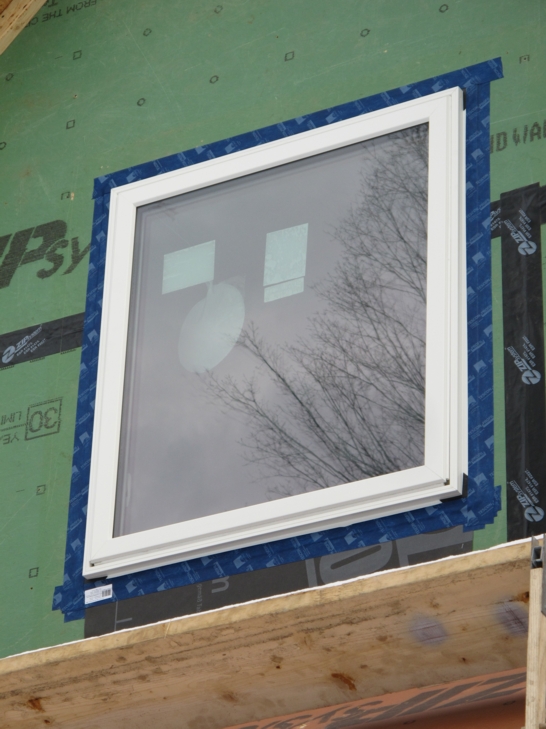




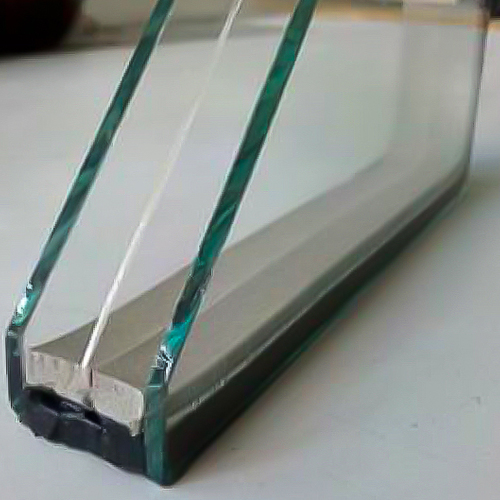
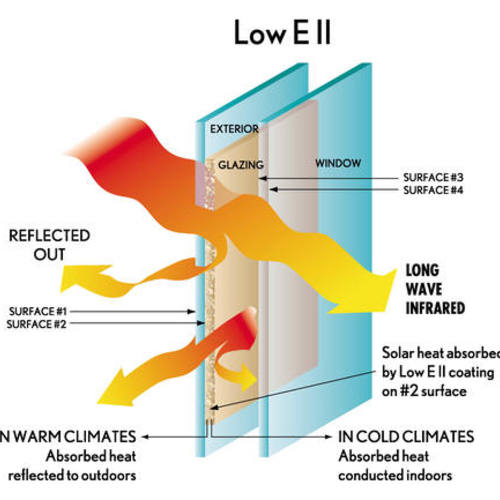
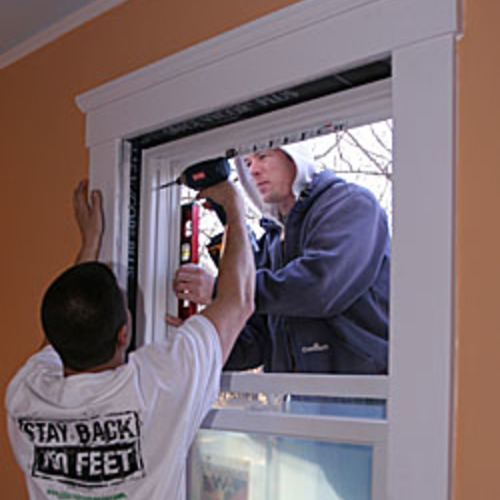
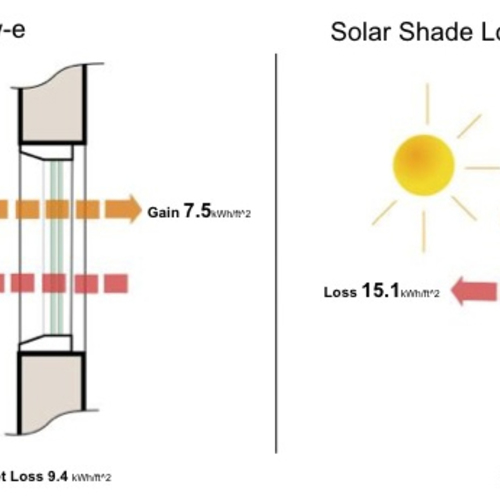






17 Comments
...
Interesting that the heat mirror films are still refered to as "glazing".
We used Serious
On our big DER project that Martin visited last year. I was glad to hear Alpen had taken it back and look forward to using them again. And Kris at Pinnacle is a good egg and always a pleasure to work with.
The "big DER project"
Dan is referring to the deep-energy retrofit job at the home of Claudia King and Lindsey Tweed. Here is a link to my report on that visit: More Job Site Visits in Maine.
Mr Wilson, would it be
Mr Wilson, would it be possible for you to share an idea of the cost of these windows from Alpen ?
Seems like impressive glazings, and the fiberglass frames look rather well finished !
(corners etc.. )
Could you take closeup pictures of the corners and details ?
Awesome windows
Very nice new windows. I am skeptical however that 12/12 windows actual are the originals from 200 years ago. Not impossible, but it is likely they were replaced at some point. I would like to know if they actually are the originals, because that would be incredible.
Response to Gavin Farrell
Gavin,
200-year-old windows aren't that rare. The 1768 Jeremiah Lee Mansion in Marblehead, Mass. has its original 18th-century windows:
http://www.marbleheadmuseum.org/LeeMansion.htm
In Europe it isn't hard to find 300-year-old windows. Here is a Dutch church with "all the original 17th century windows":
http://members.virtualtourist.com/m/p/m/1abd82/
Are our 12-over-12 widows original?
Gavin,
I wasn't being quite honest. The house where my wife and I live currently was built around 1788. Unfortunately, the windows had been taken out during a renovation in the 1960s, so ours aren't original with the house.
But when I bought the house in 1981, I was able to find sash that had been taken out of a similar-era home a few years earlier, and I replaced the modern Andersen windows with these more historically correct windows and had storm windows made. The windows still have a lot of antique, blown glass with waviness, bubbles, etc., so I think some of the panes may be original, but I don't know that. I just took a couple photos; click to enlarge.
nice
interesting, especially the bladder. One question though.. what was the reason you taped the bottom flange? Thought this was to not be taped...
Taping the bottom flange
Jesse,
We are actually going to be adding 6 inches on insulation on the exterior side of the Zip Sheathing air barrier; the tape at the bottom of the flange is there to achieve the continuous air barrier. Our primary moisture management system will be outside of the exterior insulation. Our windows are installed in the plane with the air barrier, and a pre-fabricated splayed exterior surround will be installed at the window openings.
Plastic film and UV degradation
Jesse,
Thanks for the article. Any info/opinion about the plastic film? UV tends to break down plastic whenever it is absorbed and Joe L. didn't like the look of his film after 16 years (http://www.buildingscience.com/documents/published-articles/pa-foam-shrinks) when he tore apart his barn. These were NOT Alpen windows, so the comparison is not fair... But it's the only data point for long term performance I've heard from folks with these windows. I'd love to hear others, all I can find is sales literature and graphs, hard to interpret for the layperson (http://www1.eere.energy.gov/solar/pdfs/pvmrw2011_p62_csi_brennan.pdf).
Structural Aesthetics
I know that the emphasis is insulation/performance, but those aluminum channels holding the various pieces, as can be seen looking through the window and at its edge, have an unpleasing look. I'm always amazed that in today's world there is still so little interest in the aesthetics of products. The advent of vacuum insulated glass coming to fruition will hopefully yield an overall better looking window assembly.
ROI on high tech windows?
Has the tech changed? At one point I had read that the argon in argon filled units was essentially gone after 5 years. Why would krypton be any different.
Do these extreme tech windows actually save money?
On retention of gas-fill
I did a lot of research into this issue in working on BuildingGreen's 2012 special report, "Better Window Decisions: Mastering the Performance and Cost Options" (http://greenspec.buildinggreen.com/guidance/BetterWindowDecisions). Here's a paragraph from the report on this issue:
"Although safe, these inert “noble” gases are fairly hard to contain, and they will leak from an IGU over time. As a technical bulletin from Cardinal Glass states, “No organic seal ultimately can prevent the internal atmosphere of an IGU from becoming the same as the ambient atmosphere over time.” Since
the “ambient atmosphere” we breathe contains just 1% argon (most of the rest being nitrogen and oxygen), that argon or krypton will eventually escape. Accelerated-weathering tests used by major manufacturers require 80% argon to remain after testing; this suggests that after years of service, most of the argon will remain. Informal field-testing by Randi Ernst, the president of FDR Design, Inc., which sells gas-filling equipment to the window industry, found average argon loss of 0.6% per year. At that rate, a window that started with 95% argon would still contain 79% of the original argon after 30 years and 70% after 50 years."
My conclusion is that adding argon or krypton is a no-brainer. The cost (at least for argon) is very low, and much of the benefit should still be there after 50 years. That said, we don't really know how the sealants will hold up after many decades. But I think it's worth it.
Thank you for the responses Alex and Martin
Interesting stuff. Those 300-year old wood windows are impressive! I do some historic renovations of early 20th/late 19th century industrial and residential buildings, and often (though not always), wood windows in excess of 100, 120 years old (that haven't been maintained or protected by storms or deep overhangs) are in a state where salvaging and re-using them means replacing most of the original wood material... and is a prohibitively expensive option.
Frosty Windows
I live in the mountains of Northern California at 3,400ft. I have the 925 windows which frost up when temperatures are below 30 degrees otherwise there is condensation on the windows in the morning. This blocks the view for two hours in the morning. The windows have a clear (no trees) northeast exposure to the sky, so they are able to radiate at night. I purchased Alpen windows because they can build a larger window than companies that use three panes of glass, the visible light is higher with a more natural color (not a mirror, green or blue color from the interior) for a high efficiency window, I didn't want cold windows to sit next to, and there isn't the need to purchase interior window coverings for the upper (above 8 feet) pentagon and trapezoid windows. I purchased my windows from Pinnacle Window Solutions because as a homeowner I decided I needed to purchase from a professional window company. I provided a drawing of the window layout, interior wall dimensions, desired sill height, and where I wanted the horizontal and vertical divide between the windows. They did't downsize the trapezoids on either side of the pentagon to provide for a level horizontal sill. As a homeowner I entrusted Pinnacle as a professional window company with their CAD to do the design properly. Now if I want a level window sill and symmetrical layout I have to purchase a new window (>$2,000 with shipping) because I signed the contract. Talking to other window companies and contractors, they say Pinnacle should have not made this Windows101 mistake and are suprised at there lack of support.
Nice post. Vinyl frames are,
Nice post. Vinyl frames are, no doubt, very popular because of durability. Still many people preferred wood due to its look. Want to know more about this Alpen windows with ecoating and krypton gas fill.
Cost of Alpen windows
[This comment has been edited based on revised information received from Pinnacle Windows following an earlier posting about costs. -Alex]
Pricing varies widely for Alpen Windows, depending on the size of the windows, the glazing specified (including the number of layers of glazing, low-e coatings, gas fill, and IGU thickness), the window design (fixed-glass, casement, etc.), the size of the window (smaller windows having higher square-foot costs), the region of the country, and the window supplier.
Very roughly, prices for Alpen windows range from about $40-80 per square foot. Of the three Alpen lines, 525, 725, and 925, the 525 windows are the least expensive and the 925 windows the most expensive. For detailed pricing information, contact an Alpen dealer in your area. To find a local dealer, visit the Alpen High Performance Products website, or in the Northeast, visit:
Pinnacle Window Solutions
82 Litchfield Road
Hallowell, Maine 04347
Phone 207.588.6590 or Fax 207.588.6591
Website: http://www.PinnacleWindowSolutions.net
Email: [email protected] or
[email protected] or
[email protected]
Log in or create an account to post a comment.
Sign up Log in